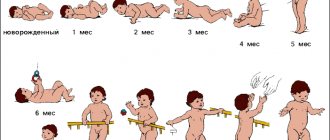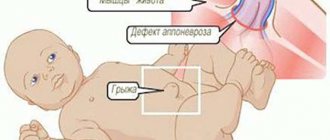June 07, 2018
Averyanova Sveta
Left-handed children have an excellent ear for music, show unique abilities to solve non-standard problems, and are drawn to various types of fine arts, but the development of speech is sometimes delayed. Parents are worried whether it is dangerous to be left-handed in the modern world, and whether this will affect learning in kindergarten and school.
Even in this progressive age, writing with the left hand still evokes an emotional response in society. What should parents do with an unusual child? Do they need to retrain a left-handed person and what should not be done with him? Science has long found answers to these questions.
Reasons for the birth of left-handers
From 7 to 17% of the population are left-handed. This means that approximately every seventh baby is born right-brained. And there is no pathology or deviation from the norm in this. From a biological point of view, left-handers are genetically healthy people.
This is interesting ! The phenomenon also occurs in other species. Left-handed dogs, for example, are more likely to learn circus tricks and search work than a general training course.
The brain is responsible for laterality. The cerebral hemispheres control the body crosswise: the right hemisphere is responsible for the functions of the left half of the body . Hence the synonym – right hemisphere.
This hemisphere of the brain is responsible for creativity, imagery and spontaneity. While the left hemisphere, which predominates in most people, gives them logic, consistency and analytical abilities.
What determines the appearance of left-handed babies has not yet been determined exactly. Among the confirmed factors of left-handedness, three can be distinguished:
- Before birth : genetic factor.
The right hemisphere is inherent in the DNA, and already at the moment of conception the unborn child is left-handed. - At birth : traumatic factor. Compensation for the consequences of left-hemisphere birth injuries leads to the active development of the right side.
- After birth : environmental factor. There may be imitation, forcedness, overtraining, injuries to the right hand.
Child development. Why are left-handed people born?
Many parents wonder why they were born left-handed.
There are a huge number of hypotheses, both reliable and not very reliable, both scientifically confirmed and nothing other than one’s own unsubstantiated conjectures. Let's get to know some of them.
A little about history
There has never been a clear opinion about left-handers. This was especially evident in antiquity, filled with myths, legends, traditions and various signs. Most were of the opinion that being left-handed meant being wrong and unwanted by society.
This attitude was manifested even in the way left-handers were called: they were called clumsy (German word “linkisch”), awkward (from French “gauche”), inappropriate. A particularly striking illustration is the Norwegian word for left-handedness: “keivhendt,” or “wrong hand.” This attitude gave rise to corresponding legends.
For example, it was believed that left-handedness is a disease that occurs at the gene level. In addition, the theory of two tribes: left-handed and right-handed was popular. Right-handers were smart and brave, they settled all over the earth and won many glorious victories - after all, the shield they held in their left hand reliably protected them, and the sword, clutched in their right hand, fearlessly struck at the exposed heart of left-handers.
However, it should be noted that there were other legends in which left-handers were given a completely different place. One of them was based on the fact that left-handers are higher beings, whom Nature, like geniuses, creates very rarely. The only thing that was not very clear in this theory was the goal pursued by Nature.
Another legend said that left-handers were representatives of the Ruler Caste, while right-handers belonged to the Worker Caste. Therefore, their ratio turns out to be completely logical: much more workers are needed than wise Rulers. But once upon a time there was a revolution on Earth, and the two castes mixed.
Of course, many legends have not reached our times, having been lost in history, but those that still live in our memory have the right to exist and be considered.
Nowadays
The number of emerging hypotheses, unfortunately, did not make it possible to process them all. Therefore, over time, a backbone was formed, consisting of several basic theories of the origin of left-handers.
1. Genetic theory
Perhaps the most controversial and ancient theory. Its core is the following idea: everything is determined at the genetic level. Two main hypotheses revolve around this core. According to the first, there is a gene for right-handedness, and left-handedness arises as a result of a random change in the genotype. The second insists on the existence of both genes - both the gene for right-handedness and the gene for left-handedness. Both hypotheses remain unproven, since neither of these genes has been officially found or studied.
2. Hereditary theory
According to this theory, left-handedness is inherited. This hypothesis is very close in meaning to the second part of the genetic theory. At the moment, it has not yet been clarified who may be the carrier of the gene for left-handedness; it is only known that left-handedness is much more common among men than among women.
This hypothesis is supported by the following fact: in most cases, adopted children whose one of their parents was left-handed also became left-handed, even if they were raised by right-handed parents.
3. Sociological theory
Left-handedness occurs under the influence of various sociological factors. It is assumed that initially a child can take any path, become either left-handed or right-handed.
Everything depends only on the people who surround him, on the actions that take place around him. One example is the education of a child by left-handed parents. By imitating them, the baby gradually becomes left-handed.
4. Biological theory (a consequence of the Geschwind-Galaburd Theory)
According to this theory, the dominant hemisphere is determined by the level of testosterone (the main male sex hormone, also produced in small quantities in women) received in the womb by the child from the mother: the higher it is, the more likely it is that the baby will be left-handed. This theory helps explain why left-handed men are more common than women.
In addition, we should not forget that you can become left-handed not only in childhood. Temporary (but quite long) inactivity of the right hand forces a person to adapt to the conditions, starting to operate with his left hand.
Left-handedness and left-handedness
True left-handedness is the result of a genetic factor. The right hemisphere of the brain in true left-handers is more active by nature and predominates in everything: in everyday life, learning, sports, communication. Not only the arm, but the entire left half of the body is used more intensely.
Left-handedness as a result of injury is forced. A negative impact on the left hemisphere of the brain leads to activation of the right, and the growing person masters the world differently than most of his peers. In real and compensated left-handers, creative activity predominates, imagination and intuition are developed.
Left -handedness is a habit, a preference for the left hand for writing, playing and holding cutlery. In all other respects, a left-handed person is no different from a right-handed person, including genetically.
This is interesting ! Preferring the right or left hand for writing is not an absolute sign. A right-hemisphere person can write with his right hand, but for other types of activities he chooses his left.
Left-handed is not yet left-handed
Denoting a person who prefers to use his left hand, he is usually called a left-hander. But if we are strict in our definitions, this is not entirely accurate. Left-handedness, in contrast to left-handedness, is a preference not only for the hand, but also for the leg, eye, ear, and even the sensitivity of the left half of the body. It’s just that in ordinary life, most people rarely pay attention to which leg, ear or eye a person prefers. However, sports coaches take these qualities into account. It is worth noting that there are very few absolute left-handers - people who have all the paired organs on the left side of the body. More often, predominant possession of the left hand is combined, for example, with the left leg, but the right eye and right ear. There are a lot of similar combinations, but their analysis is more interesting for specialists and does not represent any practical value.
How to determine whether a child is left-handed or right-handed
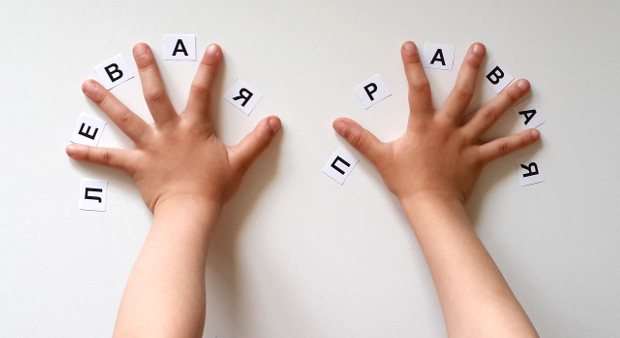
The choice of laterality occurs most often at the age of about 3 years, less often - closer to 6 years. And a fifth of people grow up without having decided on their dominant hand, having equal control of both limbs.
This phenomenon is called ambidexterity.
Once the baby begins to actively use his hands to grasp and hold, parents can develop the necessary skills for living in a right-handed world.
The first and most accessible diagnostic tool is observation. Parents need to take a closer look at their child and note with which hand he manipulates objects:
- moves a movable toy;
- folds a pyramid;
- indicates something;
- collects small objects (pebbles, buttons);
- holds cutlery;
- brushing his teeth;
- unscrews the caps;
- sweeps or wipes surfaces;
- combs;
- draws and writes.
Also note which hand becomes the supporting hand when falling, which side the thumb is on top when gripping the handles into the lock.
For reference ! Dr. Komarovsky advises testing left-handedness based on signs of left-footedness, vision and hearing functions. Functional tests help identify a hidden left-hander.
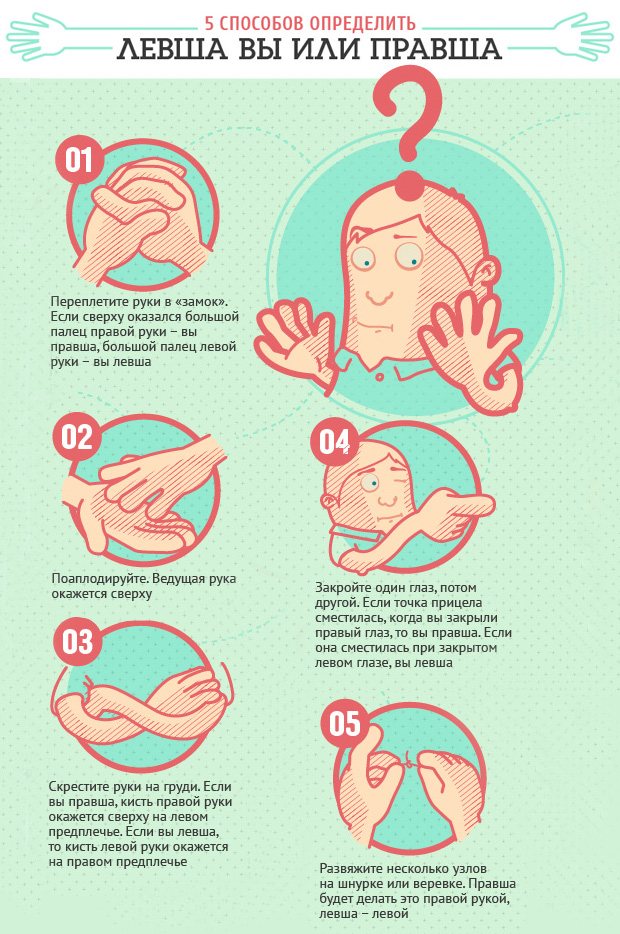
The intellectual and sensory abilities of true left-handers are absolutely consistent with the norms, but the manifestation of some developmental features is possible:
- Perseverance is developed with difficulty ; each structured lesson is given to the child with effort.
- Speech is formed somewhat more slowly and more intermittently: from a “sleeping” state it suddenly makes a leap.
- Sound pronunciation is far from ideal , but consultation with a speech therapist can easily solve this problem.
- Mathematical abilities : geometry and stereometry are easier for such children. The methods for solving problems are extraordinary.
- Good hearing, close to absolute . The child prefers the structure and sound of the classics.
- may arise with orientation in space ; it is difficult for the child to master the directions “right - left”, “top - bottom”.
- Artistic taste , a sense of color, balance, harmony develop earlier and appear brighter.
- Emotionality is higher and develops more actively.
It is important that parents’ observations and concerns are accompanied by competent diagnosis. Regardless of the dominant hemisphere, children may suffer from actual brain dysfunction. For example, some symptoms are considered not only as signs of right hemisphere, but also as alarm bells:
- mobility that is not amenable to pedagogical correction;
- pronounced disorders of the emotional-volitional sphere;
- stable mirror reproduction of a picture or text;
- significant delay in the development of speech and mental functions;
- various forms of dyslexia in children over 4 years old.
A left-handed child needs patient support from adults. He needs to be helped to get used to the space. Parents need to control themselves and not break down with phrases: “Are you completely stupid?”, “You don’t know right from left?” What is obvious for right-handed children is difficult for left-handed children.
How can you accurately determine whether a child is left-handed or right-handed?
There are many tests for parents to determine their child's dominant hand. Psychologists say that the dominant hand can be determined even in newborns. The “fencer's pose” helps in the interpretation - this is the body position that a child occupies in the first month of life, lying on his back (for a left-handed child it looks like this: the right hand is pressed to the body, and the left is extended forward).
Psychologists have also noticed that the leading hand can be determined by the direction in which the child turns his head in the first days of life.
For older children, there are other diagnostic methods. But at the same time, you must sit opposite the child and place all the things that you will offer him for testing strictly in the center. And don't rush your child.
Invite him to comb his hair and place the comb in front of him. Pay attention to which hand he reaches for the object. Observe in which hand the child holds writing instruments, with which hand he performs tasks aimed at using fine motor skills (making a chain of paper clips, cutting with scissors, unscrewing and tightening caps, etc.). If here everything is quite vague, then the task can be complicated with the help of a small hint - pour beads or peas into a glass and invite him to take them out one by one with a spoon. In this case, the child will definitely use his dominant hand.
As a left-handed person with great experience, I will tell you that personally, when I take a fork in my right hand, I would rather stab the person sitting on my right than be able to stab what’s on my plate.
There are many tests for determining “left-/right-handedness” and they can be found on the Internet with all the explanations.
Do I need to retrain
People around you always touch the main parental nerve: you must teach your child to write with his right hand at all costs! Whether a child will be comfortable living in a right-handed world depends on how the parents react to their child’s normal features.
There is nothing wrong with holding cutlery or writing utensils in your other hand.
If a child grows up with the confidence that he is the same as everyone else , he will not have difficulties in sports, everyday life, or driving a car.
Important ! The modern view of left-handedness is this: if you start retraining a true left-hander, this will upset the child’s psychological balance.
The pressure of right-handed rules requires the child to have greater mental strength, which he could spend more effectively on adapting to the world around him.
It is important to consistently build self-confidence in a child. He should not be ashamed of his uniqueness. Help him understand the possibilities and fully adjust to life. Soon he will see that he is more successful at what others struggle with.
In most cases, nature is wiser, and retraining a left-handed person is at least incorrect:
- The body of a genetic left-hander is initially designed to work in a mirror way . Retraining will lead to the appearance of neuroses and obsessive states in a child who already lives according to unusual rules.
- Retraining compensatory left-handedness is an intrusion into the natural process of rehabilitation and adaptation of the psyche and physiology of a little person who was born genetically right-handed. He is forced to make efforts to achieve comfort after injury. Why go against this?
Restoring the functions of the left side of the brain in case of injury does not require shifting the pencil to the other hand, but a whole range of measures.
If a genetically right-handed child strives to operate with his left hand and is successful in this, let him act. Such training helps to open up unprecedented brain capabilities. Left-hemisphere children who use their left hand are more successful in sports and school, their mental and physical abilities are universal.
The consequences of retraining a left-hander can be:
- enuresis of a neurotic nature;
- movement disorders;
- sleep disorders;
- fatigue;
- tics;
- disturbances of appetite and digestion;
- stuttering;
- low adaptation;
- attention and memory disorders;
- decreased will;
- weight fluctuations;
- dizziness and pain;
- emotional disturbances.
This is only part of the possible consequences of parents and teachers trying to fit a left-handed child to generally accepted standards.
Watch the story, which tells in detail and interestingly about the developmental features of a left-handed child.
Do I need to retrain a left-handed person?
Can you change your eye color? What about the shape of the nose? Agree - perhaps with the help of a surgeon. Left-handedness is the same congenital feature of the body, and its correction is as dramatic as surgical intervention.
Not so long ago, left-handers were carefully remade by the combined efforts of families and schools. Yes, the child learned to write with his right hand. And in addition, he acquired various types of neuroses: tics, increased fatigue, stuttering, upset stomach, sleep disturbances, enuresis and other neurotic reactions. Isn't it too high a price to pay to be “like everyone else”?
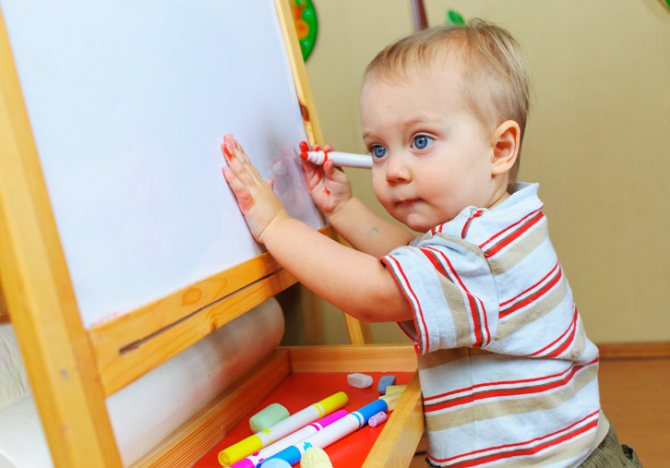
Today, to the question: “Do I need to retrain?” doctors and teachers answer: “No!” A left-handed child needs to adapt to the world around him, and our task is to help him with this. Loving parents and a competent teacher will be able to adjust the education system to suit the characteristics of a left-hander. Give your first-grader the opportunity to learn at his own pace, find an individual approach, and he will be able to get along with the right-handed world around him.
What parents can do:
- talk to the teacher in advance, make sure that he is ready to take into account the characteristics of your child, if not, change the class;
- do not focus the attention of the child and others on his left-handedness;
- find an activity that develops both hands (swimming, skiing, basketball, playing the piano, sculpting);
- Accept bad handwriting. Teach how to sit correctly when writing, how to hold a pen and notebook correctly (there are special recommendations for left-handed people);
- when learning to read, use an opaque bookmark to discover a new word as you read the previous one;
- use visual aids during classes;
- be patient, carry out any explanation step by step, element by element;
- Take into account the increased sensitivity and emotionality, as well as the fatigue of a left-handed child. The duration of homework for such first-graders is 20-25 minutes, then a break is needed.
According to statistics, every third child who stutters is a retrained left-hander. Yes, the love of parents and the professionalism of teachers can manifest themselves in this way. Agree, this is a reason to think.
Features of education
Now it is clear that retraining a left-handed person is impossible or makes no sense. When raising a left-handed child, you need to adhere to several fundamental positions:
- Warn all specialists working with the baby about this feature. Kindergarten teachers, additional education teachers, coaches and school teachers should treat left-handers with understanding and attention, without singling him out in the team.
- Make sure that no one from the environment expresses regret or irritation about the child’s non-standard “habits”.
- Be aware of the slowness in teaching left-handed children to read and write . You should not choose groups and classes with an intensive program.
- Support your child at every stage of learning . It is better to check lessons at school together and correct mistakes immediately, rather than leaving the child alone with his difficulties.
- Be loyal to the manifestations of the formation of memory, thinking, attention and speech.
In order not to harm the development of a left-handed personality, parents and teachers should avoid any manifestations of a negative attitude towards a child’s peculiarity:
- indications of left-handedness in a negative sense;
- reproaches for laziness and slowness;
- expressions of anger;
- shouting, comments, punishments, lectures.
None of the above contributes to the development of independence, self-confidence, high self-esteem and the desire for success.
Teaching writing and reading
In kindergarten and primary school, teachers must know how to teach a left-handed child to write, and use a personal methodology and program for working with such a pupil.
At the stage of mastering the alphabet, everything will be different: the type of exercises, sitting at the desk, the position of the notebook, the outline of each capital letter, holding the instrument, the direction of the light.
Important ! You should not send your child to a special group or take him to individual lessons. The most important skill is the ability to communicate and learn with right-handed children on equal terms, and not at all to write beautifully.
- If the desks in the classroom are not personal, then seating on the left side is preferable .
- When developing handwriting for left-handers, reverse or forward slanting , intermittent characters, and distortion of handwriting are allowed.
- It is important that a left-handed first-grader holds the pen correctly and learns not to smudge the written text with his palm. The same goes for drawing.
- To cope with the difficulties of drawing (reproducing) similar letters, it is advisable to use visual materials and memorable images.
- Being tolerant of mistakes and confusion between E and S, Z and R is an important factor in successfully mastering writing.
When reading, a child faces another difficulty - the perception of the text. He strives to immediately build a coherent image, to cover the entire page; it is difficult for him to learn to read syllables. In grades 1–2, left-handed children usually lag behind in reading speed until they develop the skill of reading whole words.
Tips for parents
Don't try to consider your child special. Don't compare him to others. It is much better if a preschooler has a healthy attitude towards his characteristics and learns to adequately assess progress in learning. How to achieve this:
- let the child understand that you are on his side and will not allow anyone to invade his personal space and change it;
- compare not with others, but with himself in the past : what has become better;
- explain the advantages and disadvantages of using the right or left hand;
- exercise fine and gross motor skills , develop personal abilities and talents, and not try to “catch up” with right-handers;
- teach skills in specific situations;
- encourage in a timely manner without making too high demands;
- organize a comfortable workplace and personal space, this is equally important for a boy and a girl, the best thing is a separate room where the world of children's imagination reigns;
- always remain a sensitive teacher , show kindness and participation.
Every recommendation makes sense. The baby needs to be consistently taught order and rationality. This takes a lot of energy from parents, but the results are worth it. A characteristic feature of an adult left-handed person is orderliness combined with unique creative abilities.
Great and famous people
To increase your child’s self-esteem, give examples of famous people who had the same feature. To improve achievements in a particular field, select relevant great personalities. For example, for a child musician the best example will be Beethoven or Bach , and a young chess player will be inspired by Einstein .
Among the great right-brain names you can find anyone: presidents and rulers ( Bill Clinton, Julius Caesar, Alexander the Great ), scientists ( da Vinci, Ivan Petrovich Pavlov ), artists ( Michelangelo, Picasso ).

